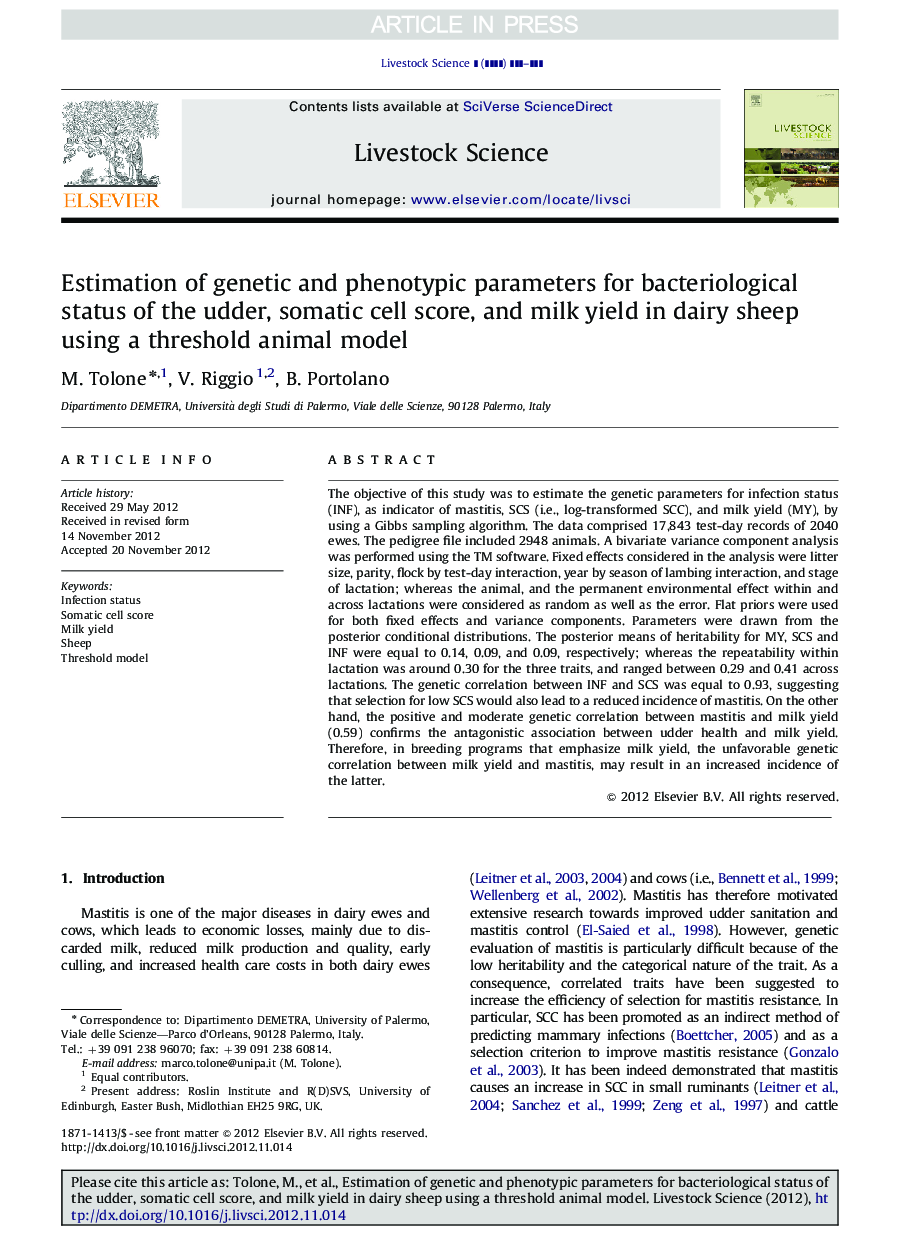| Article ID | Journal | Published Year | Pages | File Type |
|---|---|---|---|---|
| 5790446 | Livestock Science | 2013 | 6 Pages |
Abstract
The objective of this study was to estimate the genetic parameters for infection status (INF), as indicator of mastitis, SCS (i.e., log-transformed SCC), and milk yield (MY), by using a Gibbs sampling algorithm. The data comprised 17,843 test-day records of 2040 ewes. The pedigree file included 2948 animals. A bivariate variance component analysis was performed using the TM software. Fixed effects considered in the analysis were litter size, parity, flock by test-day interaction, year by season of lambing interaction, and stage of lactation; whereas the animal, and the permanent environmental effect within and across lactations were considered as random as well as the error. Flat priors were used for both fixed effects and variance components. Parameters were drawn from the posterior conditional distributions. The posterior means of heritability for MY, SCS and INF were equal to 0.14, 0.09, and 0.09, respectively; whereas the repeatability within lactation was around 0.30 for the three traits, and ranged between 0.29 and 0.41 across lactations. The genetic correlation between INF and SCS was equal to 0.93, suggesting that selection for low SCS would also lead to a reduced incidence of mastitis. On the other hand, the positive and moderate genetic correlation between mastitis and milk yield (0.59) confirms the antagonistic association between udder health and milk yield. Therefore, in breeding programs that emphasize milk yield, the unfavorable genetic correlation between milk yield and mastitis, may result in an increased incidence of the latter.
Related Topics
Life Sciences
Agricultural and Biological Sciences
Animal Science and Zoology
Authors
M. Tolone, V. Riggio, B. Portolano,
